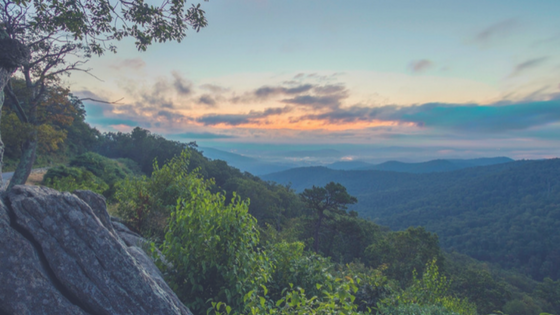
The Shenandoah Valley has been a cultural crossroads for thousands of years. The biodiverse climate has supported a multitude of people groups from hunter-gatherers in the Archaic age to Native American tribes who resided in the area until the early 1700s. The first European immigrants to the Shenandoah Valley were German Mennonites and members of Church of the Brethren, whose family farms sustained the local economy until the early 1900s. According to recent research, Native Americans slowly moved away and/or married the European newcomers over time. Mennonites and members of Church of the Brethren have had a large role to play in the resettlement of foreign born individuals in the Valley. The denominational emphases on pacifism, social justice, and missions primed the Valley for treating an influx of migrants with compassion and respect. For example, a community member, Naomi West, of the Bridgewater Church of the Brethren was integral in resettling the first refugees, a Dutch Indonesian family, in Harrisonburg in 1957 as part of post World War II efforts.
The surge in immigration to the Harrisonburg and Rockingham County area has a relatively short but undoubtedly rich history. Today the proportion of foreign born persons in the area is 16.7 percent, compared to 10 percent in the state of Virginia, and 13.7 percent nationwide. However, the foreign born population was not always this large. An understanding of these demographic changes requires a brief education on the region’s history.
In the 1950s and 1960s, the proportion of foreign born persons in Harrisonburg hovered at around one percent. In 1965, the Immigration and Nationality Act repealed immigration quotas based on national origin and made visas accessible to people from all over the world. The first Latinos to come to the Valley were Mexican migrant workers who began to come seasonally to pick apples in the 1970s.
Federal policy changes in the 1980s also contributed to the growth of the immigrant community in the area, most notably through the Immigration Reform and Control Act in 1986, which granted amnesty to immigrants who had entered the country without a visa prior to 1982. An estimated 3 million individuals gained legal status through the federal amnesty program, with about 180 in the Harrisonburg area acquiring status with the help of a Spanish-speaking liaison at Blessed Sacrament Catholic Church. Many of these individuals decided to stay in Harrisonburg and encouraged their friends and family members to join them. Their new permanent status led many of these Latin American (primarily Mexican) immigrants to take full time position in the local poultry plants, rather than working seasonally as apple pickers as many of them had been doing previously.
Additionally, conflict in Central American countries such as Nicaragua, Honduras, and El Salvador during the 1980s caused an outpouring of immigrants from those countries into the United States. During this decade, the proportion of foreign-born individuals in the Harrisonburg area climbed by one point, to two percent. Skyline Literacy, a local literacy nonprofit, was founded in 1987, and has been an integral part of educating the foreign-born population. Although the organization’s original focus was combating illiteracy among the local population, it ultimately broadened its scope to provide English as a second language and citizenship preparation classes. The combination of all of these national and local factors, as well as the development of a refugee resettlement office under the auspices of the Virginia Council of Churches and Church World Service in 1987, primed the Valley for an increase in immigration to the area.
Indeed, the 1990s saw immigration rates begin to climb in Harrisonburg. This decade was a definite period of transition for the community. As in previous decades, federal policies had measurable effects at the local level. The North American Free Trade Agreement (NAFTA), was signed in 1992 and took effect in 1994. The negative economic impact NAFTA had on small Mexican farmers contributed to the influx of Mexican immigrants to the United States. The burgeoning communities of resettled refugees (primarily Kurds and Eastern Europeans during this time) and immigrants drawn here by the poultry industry led to the increase of community growth among different ethnicities. During this decade, more organizations were established to address the needs of the changing community, such as the Blue Ridge AHEC Community Health Interpreter Services and Promotores de Salud. By the late 1990s, Harrisonburg City Public Schools provided translation and interpretation support for multiple languages, including Spanish, Arabic, Kurdish, and some Russian. The turn of the millennium opened a new chapter in the steadily changing demographics of the Harrisonburg and Rockingham County area.
During the early to mid 2000s many new organizations formed to serve the diversifying needs of the community. NewBridges Immigrant Resource Center started in 2000 out of a collaboration of Mennonite churches to address the spiritual, social, and economic needs of immigrants. The development and success NewBridges has had is an example of the way the religious roots in the Valley have supported an increasingly multicultural community. In 2009, the dual language program was developed in the Harrisonburg City school system, and First Step received the funding necessary to support a full time bilingual staff person.
Moving into the 2010s, the foreign-born population continued to grow. Local agencies continued to develop and community organizers rallied to support the newfound diversity in Harrisonburg. Organizations such as Faith in Action and Virginia Organizing encouraged civic engagement to make Harrisonburg a Welcoming City--that status was achieved in 2016. Programs such as Linking Communities and Telamon provide resources to immigrants, refugees, and their families. NewBridges has also grown over the past several years. The collaboration between Blue Ridge Legal Services, Washington and Lee Law School, First Step, and NewBridges was developed in 2016, which provides pro bono legal counsel to immigrants who are victims of domestic violence. NewBridges also moved into its new office space on West Water Street in 2015, which opened up more room for working with clients.
As of 2017, Harrisonburg is a multiethnic, multilingual city. 16.7 percent of the city was born outside of the United States. 35 percent of students in the Harrisonburg City Public Schools are English Language Learners (ELLs), among whom there are 51 countries and 57 languages represented. A new presidential administration has posed challenges to many immigrants and refugees, but the overwhelming support and pride in this community provides hope for the future.
Information for this blog post came primarily from Dr. Laura Zarrugh's presentation at the NewBridges Collaborative Community Summit that was held in February. Specific organizational information was provided by Collaborative Community Summit attendees, many of whom are practitioners at local entities that work with the foreign-born population.
Information on the pre-historic and Native American presence in the Shenandoah Valley was taken from Dr. Carole Nash’s presentation on February 18, 2016, entitled “The Archeology of the Shenandoah Valley Native Americans: Deep Time and Place.” For related reading, please see Willliam Gardner’s 1986 book “Lost Arrowheads and Broken Pottery: Traces of Indians in the Shenandoah Valley.”
For additional reading on the local Latino/a presence, please consult Dr. Laura Zarrugh’s articles entitled The Latinization of the Central Shenandoah Valley and From Workers to Owners: Latino Entrepreneurs in Harrisonburg, Virginia.
-
About the Author: Lindsay Wright is a 2016 graduate of James Madison University, where she double majored in Communication Studies and Spanish. She is completed a nine-month internship at NewBridges in 2017, where she is produced content for the blog and worked with clients. In her free time, Lindsay enjoys reading, cooking, and spending time outside.
